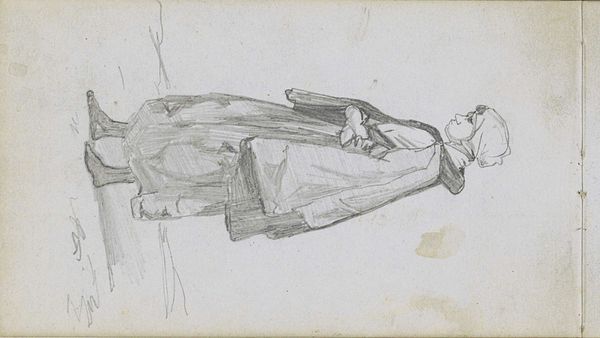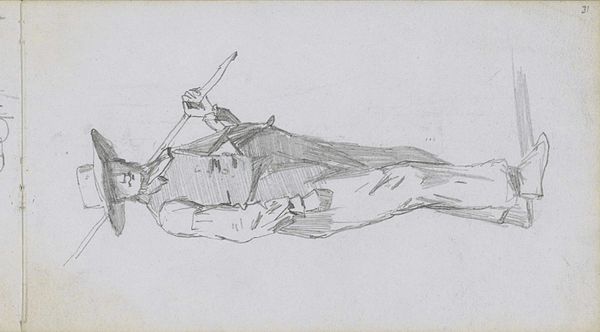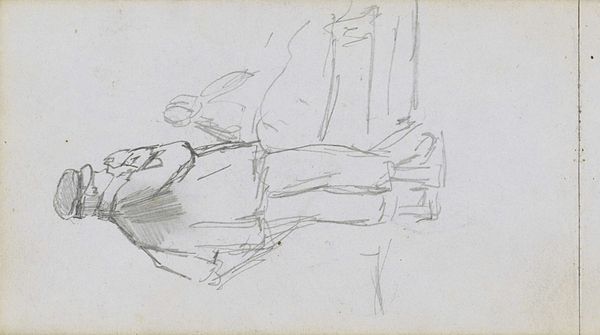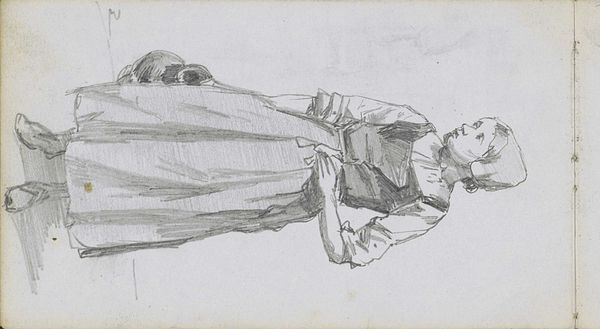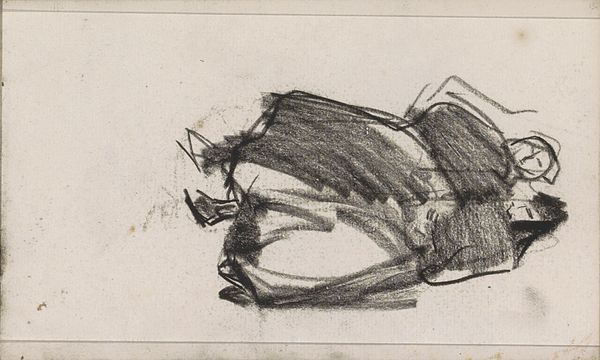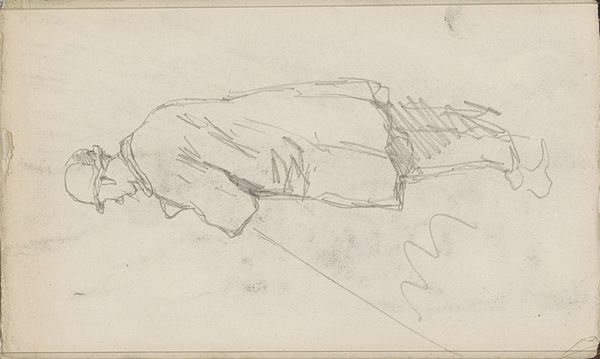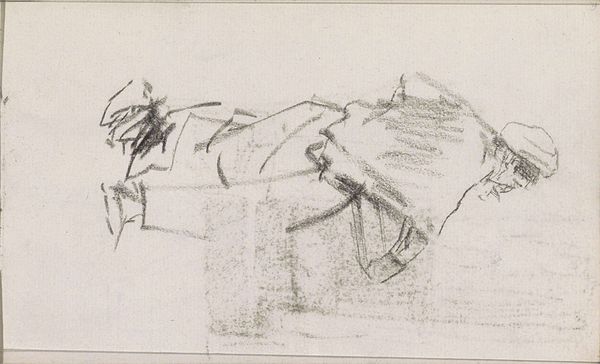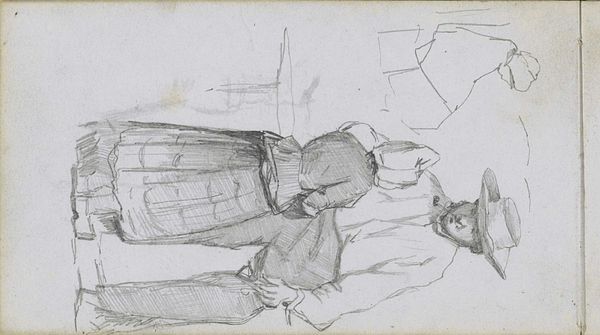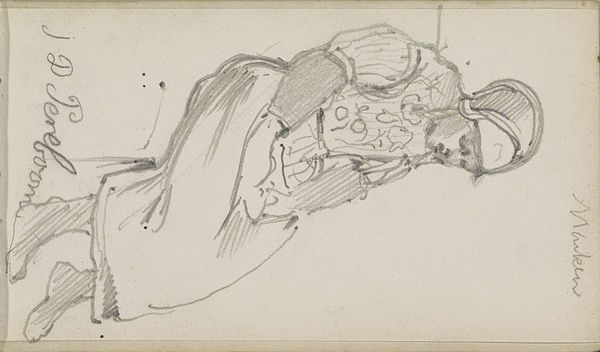
drawing, paper, pencil
#
portrait
#
drawing
#
pencil sketch
#
paper
#
pencil
#
realism
Copyright: Rijks Museum: Open Domain
Curator: This sketch, housed at the Rijksmuseum, is entitled "Vrouw die een pakket op haar hoofd draagt," or "Woman Carrying a Package on her Head." It comes to us from Johan Hendrik Weissenbruch, created sometime between 1834 and 1903, and employs pencil on paper. Editor: Well, my first impression is this looks like a quick study, almost dreamlike in its simplicity. There’s a softness to the shading that’s really compelling. I almost feel like I’m peeking into someone's memory. Curator: Absolutely. The rapid, almost impressionistic lines invite speculation about the woman's life, and her positionality as perhaps part of the working class. Weissenbruch had a deep interest in the lives of everyday people. I find myself considering the burdens placed upon women in that era, both literally and figuratively, in a patriarchal society that routinely overlooks women's contributions to society. Editor: Oh, totally, I agree. And just look at how he’s captured the weight of that package with just a few strokes. It speaks to something deeper about the strength and resilience of these unseen women who just go about doing what needs doing, you know? There's an uncelebrated beauty here. Curator: It also serves as a quiet commentary on the invisibility of labor. Her face isn't detailed, which suggests a certain degree of anonymity. She’s representative of a larger group of marginalized laborers. By portraying her, Weissenbruch makes an argument about representation and visibility that we should, perhaps, consider intersectionally. Editor: I think that reading rings true. You know, something that's neat, when I step back and think about it is that Weissenbruch probably saw her only for a moment—but through art, her memory lasts lifetimes, if that makes sense? He's transformed the mundane into something meaningful. It’s like finding poetry in the everyday. Curator: Precisely, and that's precisely the strength of Weissenbruch as an artist, isn't it? This piece makes us contemplate larger questions of power and the act of looking, all stemming from what appears to be a fleeting observation. Editor: I love how a simple sketch like this can hold so many stories. Makes me want to keep my eyes peeled, see what little stories I'm missing. Curator: I think that’s the best takeaway: that this drawing, in its quietude, implores us to think critically about what—and who—we choose to see.
Comments
No comments
Be the first to comment and join the conversation on the ultimate creative platform.
